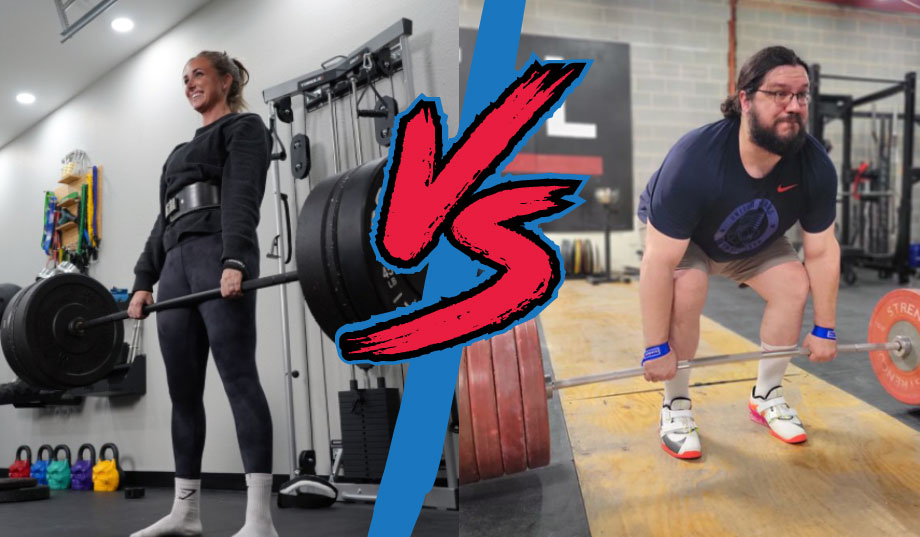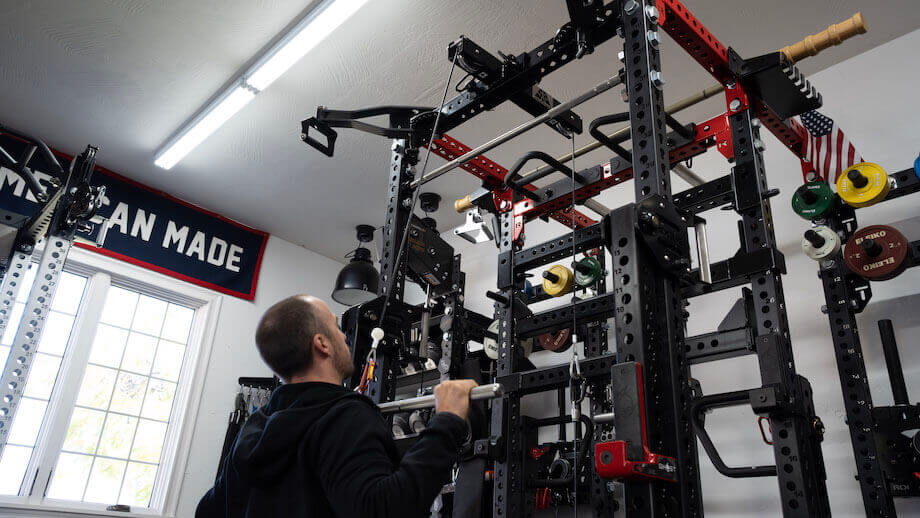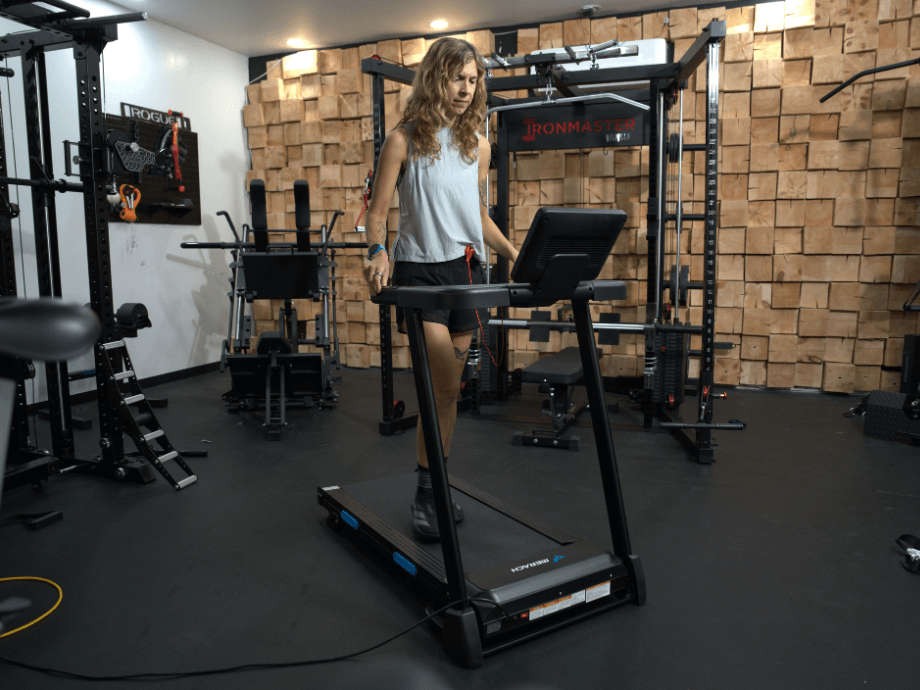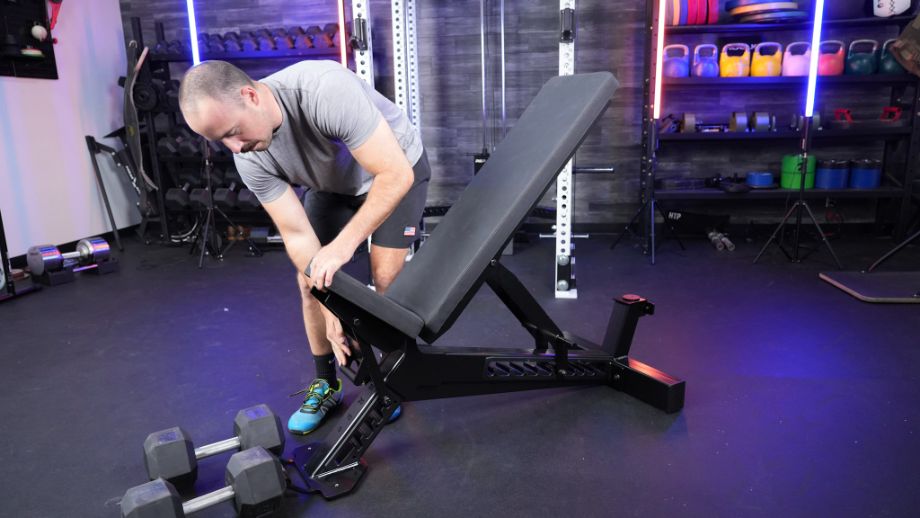Few exercises rival the effectiveness and raw power of the deadlift and its variations for strength training. I’m here to discuss the two heavy hitters: the Romanian deadlift (RDL) and the conventional deadlift. While both exercises target similar muscle groups and offer substantial benefits, they diverge in technique and focus, providing lifters with unique challenges and opportunities for growth.
At their core, the Romanian deadlift and conventional deadlift are compound movements that primarily engage the posterior chain, yet they differ in execution and emphasis. The Romanian deadlift is a foundational exercise to bolster deadlift strength and a potent tool for developing your hamstrings. Standard deadlifts drive maximal strength and power and enable you to experience that feeling of ripping a heavy barbell off the floor.
RELATED: 16 Best Deadlift Variations
The choice of Romanian deadlift vs deadlift hinges on your fitness goals. With my guidance below—I’m a certified strength and conditioning specialist (CSCS)—you can discern when to opt for the conventional deadlift or its Romanian cousin.
Quick Look: Romanian Deadlift vs Deadlift
The Romanian deadlift (RDL) emphasizes hip hinge mechanics and targets your hamstrings and glutes through eccentric training. It aids in improving deadlift and grip strength and hamstring flexibility and aids in injury prevention. On the other hand, the conventional deadlift engages more muscles in your upper and lower body, offering a full-body workout for maximal strength, power, and muscle development.
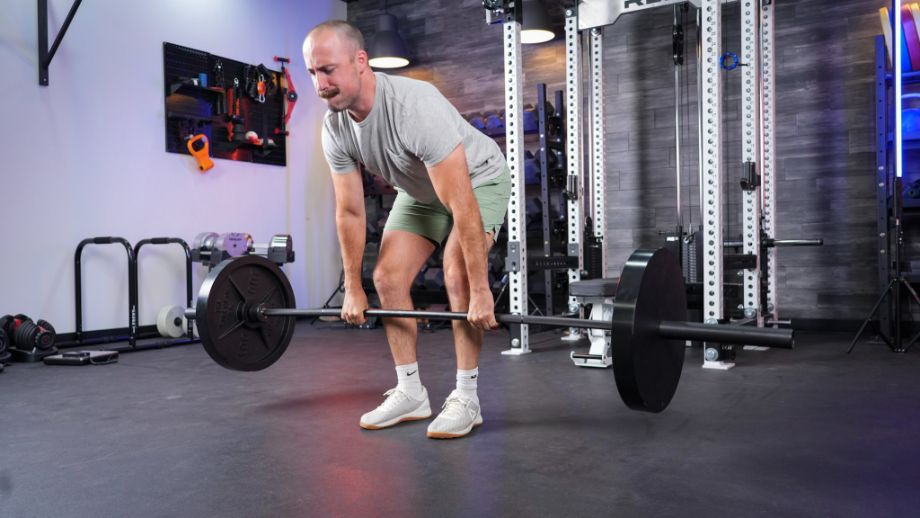
Both exercises are valuable additions to your strength training regimen, with the RDL focusing on specific muscle groups and form reinforcement and the conventional deadlift offering overall strength and power benefits.
RELATED: How To Deadlift
Key Similarities Between Romanian and Conventional Deadlifts
Some may consider the Romanian deadlift a descendant of the conventional deadlift, and I agree. While the RDL and conventional deadlift appear different at first glance, they share key similarities
Build Posterior Chain Strength
One notable similarity between the two movements is their emphasis on engaging the posterior chain muscles, including the hamstrings, glutes, and low back. These muscles are heavily recruited during both exercises to execute the hip hinge movement pattern, which involves hip extension against resistance (hello, grip strength). Similarly, both exercises require a strong dose of hip extension to lock the barbell out at the top of each rep.
Have Similar Movement Patterns
As established above, both exercises emphasize a hip hinge movement pattern to target and engage your hamstrings, glutes, and lower back. So, while the exercises may look (and feel) slightly different, they’re both pulling movements that follow similar patterns.
Important Differences Between Romanian and Conventional Deadlifts
There are a few main differences to consider to understand how to program these exercises effectively for your training goals.
Muscles Recruited
The Romanian and conventional deadlifts are exceptional for activating your posterior chain muscles, but each variation shifts the emphasis on specific muscles worked and to what extent.
The Romanian deadlift is considered one of the best hamstring exercises. A 2020 systematic review in PLoS One1 found that the RDL exercise recruits the hamstrings more effectively than the conventional deadlift, which allows the RDL to flex its power as a hamstring-developing exercise; if you’ve ever taken a break from RDLs and jumped back in, you’ve probably experienced those dreaded hamstring DOMS (delayed onset muscle soreness).
In a 2018 study in the Journal of Exercise Science and Fitness2, researchers found the conventional deadlift recruits more muscles, such as the quadriceps, glutes, and erector spinae, than the RDL due to the former’s “pushing” nature. Second, the upper body plays a crucial role in keeping the barbell close to your body, especially the upper back and lats, as you move closer to the hip, bringing a more engaging full-body effect for size and strength.
RELATED: Deadlift Muscles Worked
Range of Motion
Range of motion is another key difference between the RDL and conventional deadlift.
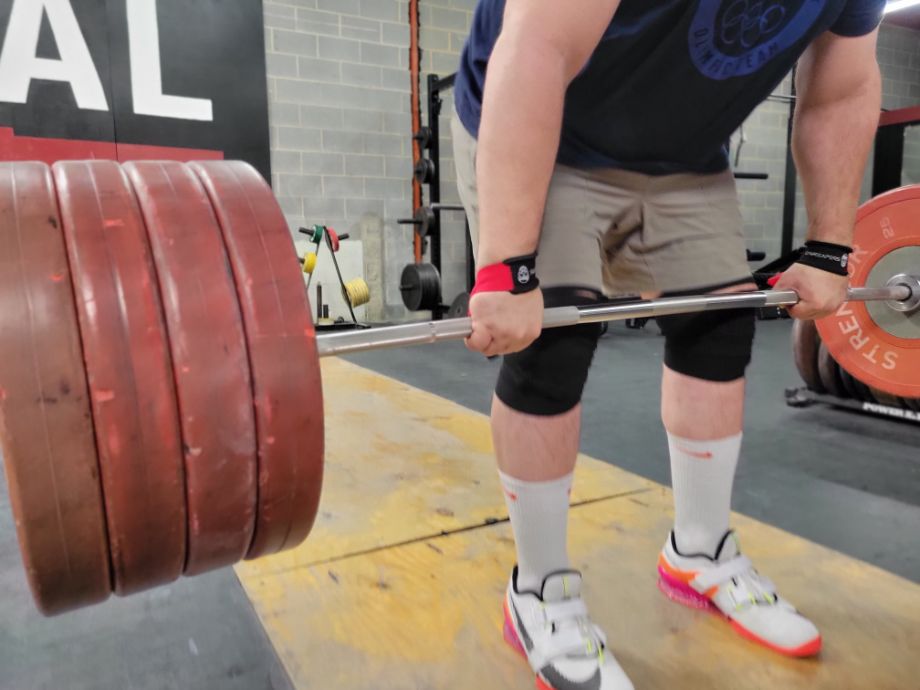
During the Romanian deadlift, the lifter begins with weight in hand at waist level, descends to shin height with minimal knee bend, and returns to a standing position with powerful hip extension. Unlike conventional deadlifts, the barbell never touches the floor, maintaining a continuous motion “floating” up and down the legs throughout each rep.
Conversely, the conventional deadlift starts from the floor with a hip-dominant setup. The lifter pulls the barbell to waist level, achieving a locked-out position with a tall stance and powerful hip extension before a controlled descent back to the floor. This movement involves the barbell traveling from the ground to waist level and back down with each repetition, engaging various muscle groups.
Max Strength vs Accessory
A straightforward answer: the conventional deadlift builds strength, which isn’t to say the Romanian deadlift doesn’t increase strength, but there’s a reason why the standard deadlift ranks high amongst powerlifting, weightlifting, and athletic populations.
As a Certified Strength and Conditioning Specialist and tenured personal trainer, I’ve come to rely on the conventional deadlift and trap bar deadlift variations to drive strength (and even speed!) gains in my athletes and clients. I rely on an RDL workout, whether using a barbell, a pair of the best dumbbells, or the best kettlebells to bulletproof the posterior chain, develop the hamstrings3 for injury prevention, and improve muscle mass. The options are also several RDL variations—single-leg, bilateral, slow tempos, deficit, you name it!
How to Perform Romanian Deadlifts
Why do it: The Romanian deadlift amplifies hamstring strength, size, and muscle integrity (important for injury prevention), as the hip-dominant nature of this exercise provides a potent stretch of the hamstrings as the barbell descends.
How to do it:
- Position your feet hip-width apart, flat against the floor.
- Grab the barbell with a shoulder-width overhand grip.
- Lift the barbell to standing.
- Hinge by creating a slight bend in your knees and pushing your hips back. Keep the bar close to your lower body as your chest leans forward.
- Lower the bar slowly until you feel your hamstrings stretch, keeping your back straight.
- Then, drive your heels into the ground and your hips forward (without hyperextending your back) to return to the starting position.
- Repeat for desired reps.
Expert tips: Squeeze your glutes as the barbell passes your knees to drive powerful hip extension for a strong lockout. You can also mix things up with deficits, slow eccentrics (lowerings), and single-leg variations.
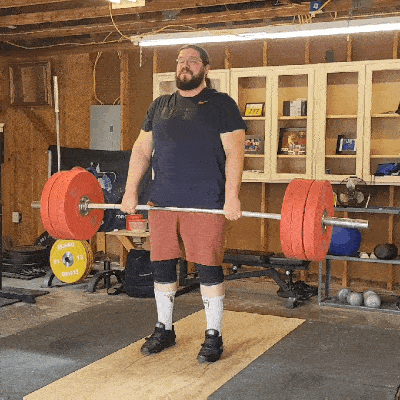
Benefits of Romanian Deadlifts
If you’re considering the Romanian deadlift for your barbell workouts, check out this quick list of benefits:
- Increases posterior chain strength
- Improves grip strength
- Increases core stability and engagement
- Increases muscle mass
- Improves hamstring flexibility
- Improves deadlift performance
- Increases injury prevention4, especially in the hamstrings
How to Perform Conventional Deadlifts
Why do it: The conventional deadlift builds raw strength from the ground up by activating an array of lower body muscles, including the quads, hamstrings, glutes, and erector spinae, enabling you to lift more weight.
How to do it:
- Start with your feet shoulder-width apart and toes under the bar.
- Hinge at your hips and knees, gripping the bar just outside your legs.
- Engage your core, raise your chest, and straighten your back.
- Lift the barbell by pushing through your heels, straightening your legs, and driving your hips forward. Keep the bar close to your body.
- Stand tall, pause, then lower the bar back toward the ground by bending your hips and knees.
- Control the descent and repeat.
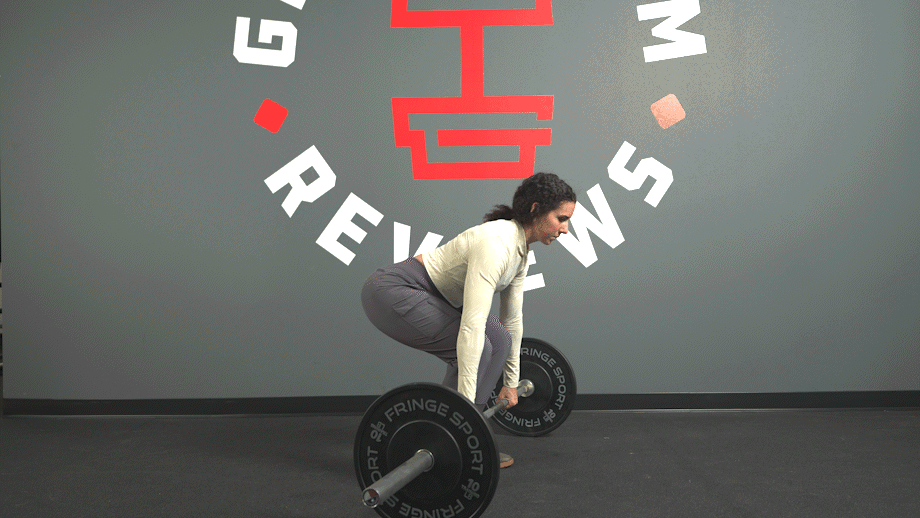
Benefits of Conventional Deadlifts
Conventional deadlifts are a true feat of strength. But there’s more to this exercise than ripping a loaded barbell off the floor:
- Engages full-body
- Increases maximal strength5
- Improves athletic abilities6 (such as sprinting and jumping)
- Improves grip strength
- Increases core stability and engagement
- Increases muscle size
- Improves muscle endurance7
- Strengthens lower back to alleviate back pain.
Romanian Deadlift vs Deadlift: Which Should You Do?
Understanding the distinct benefits of each exercise is crucial when considering whether to incorporate Romanian deadlifts (RDLs) or standard deadlifts into your training program.
The Romanian deadlift primarily targets the hamstrings, glutes, and lower back, emphasizing the hip hinge movement pattern. With a focus on maintaining muscle tension throughout the movement, RDLs are particularly effective for hypertrophy and strength development in the posterior chain. Conversely, the standard deadlift engages a broader range of muscles, including the quadriceps, hamstrings, glutes, lower back, and erector spinae, and channels your upper back muscles and grip strength. This compound exercise enhances overall strength and promotes functional movement patterns essential for activities of daily living and athletic performance.
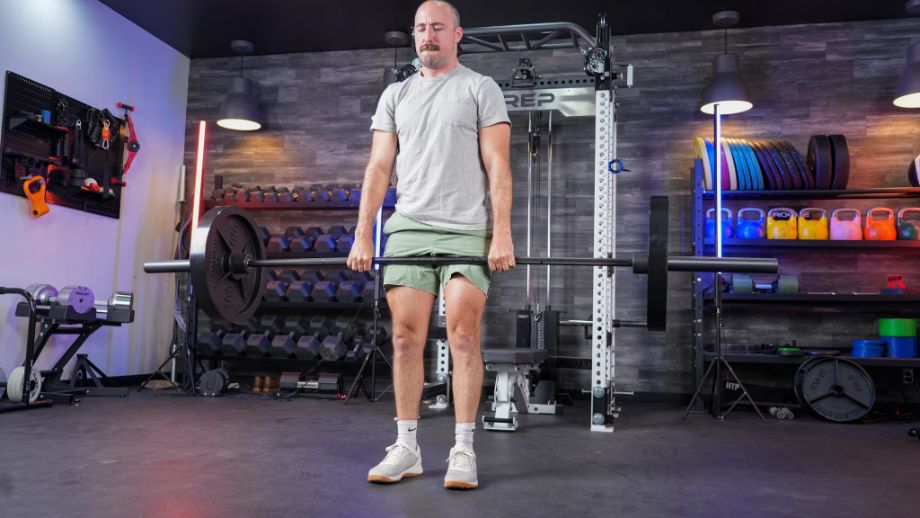
Ultimately, the choice between Romanian and standard deadlifts depends on your fitness goals and individual preferences.
If you’re seeking to prioritize hypertrophy and strength in the posterior chain while refining hip hinge mechanics, RDLs might be the preferred option. On the other hand, incorporating standard deadlifts into your routine would be beneficial if you aim to build overall strength, enhance functional movement patterns, and engage multiple muscle groups simultaneously. Being strategic can offer a fantastic approach to lower body and overall strength development.
Romanian Deadlift vs Deadlift: Final Thoughts
Both the Romanian deadlift and conventional deadlift are powerful choices for strengthening your posterior chain. Distinguishing between these exercises will help you tailor your training program to achieve optimal results.
- Deadlift variations develop strength and size in your posterior chain.
- The Romanian deadlift is potent for developing the hamstrings, while the conventional deadlift recruits more lower-body muscles, such as the quadriceps, glutes, hamstrings, and erector spinae, than the RDL.
- While the RDL can be effective for developing hamstring strength, it’s best used as an accessory exercise to support a stronger deadlift. However, it may be used as a primary strength movement for lower-body workouts.
- Explore barbell deadlift variations such as traditional, sumo, and stiff-leg, or try dumbbell or kettlebell options.
- Pick the best exercise that fits your goals and is tailored to your needs!
Romanian Deadlift vs Deadlift: FAQs
Are Romanian deadlifts better than regular deadlifts?
The RDL is one of the best hip hinge exercises focusing on a hamstring and glute dominant hip hinge movement pattern, primarily engaging the hamstrings and glutes. On the other hand, the traditional deadlift combines a powerful push from the quads off the floor with a pull from the hamstrings and glutes, resulting in comprehensive engagement of the entire lower body.
Both exercises build muscle and strength in the lower back and legs. That said, the conventional deadlift leans towards pure strength enhancement, and the RDL is more potent for strength and hypertrophy, particularly emphasizing the lower back, glutes, and hamstrings, making it an ideal choice for those aiming to develop those specific muscle groups.
Can I replace deadlifts with RDLs?
If you’re strictly training for strength or muscle size, you may swap the RDL for the conventional barbell deadlift—when it makes sense. The traditional deadlift combines a push off the floor with your quads and a pull from your hamstrings and glutes for a strong lockout. On the other hand, RDLs emphasize a hamstring and glute hip-hinge movement pattern, isolating those two muscles compared to a full lower-body engagement. Pick the hip hinge variation that best targets the muscles you want to focus on.
If you’re training for powerlifting, Olympic weightlifting, or CrossFit, I’d advise keeping the RDL as an accessory movement or a primary hinge exercise on your auxiliary days.
What is the difference between a stiff leg deadlift and Romanian deadlift?
Here’s a clear breakdown of the key distinctions between the stiff-leg deadlift and the Romanian deadlift (RDL):
Starting position: The stiff-leg deadlift initiates from the floor, while the Romanian deadlift starts at the waist and descends toward the ground after lifting the barbell from the floor.
Range of motion: The stiff-leg deadlift covers a greater range of motion, with the barbell coming to a dead stop on the floor between repetitions. In contrast, the RDL doesn’t touch the floor between reps; it halts mid-shin on the descent before returning the barbell to hip level.
Time under tension: The RDL typically involves more time under tension than the stiff-leg deadlift due to the floating motion between reps and the constant tension maintained throughout the movement.
Load: Due to the starting positions and the length of each movement, the RDL may be easier for lifting heavy weights compared to the stiff-leg deadlift—unless you’re blessed with long arms and flexible hips and hamstrings.
Should Romanian deadlifts be heavy or light?
The weight you pull depends on your “why” for performing the Romanian deadlift and training level. If you aim to build strength as part of a full-body barbell workout, opting for heavier weights and fewer repetitions, typically around 4 to 8 per set, is recommended. Conversely, if you’re hitting the gym for a hypertrophy workout, emphasizing higher volume sets with 8 to 12+ reps using lighter weights will be more suitable. If you’re a beginner, aim to use moderate weights first, prioritizing technique.
Maintaining proper form and precisely executing each movement is essential for all levels to avoid common mistakes.
References
- Martín-Fuentes I, Oliva-Lozano JM, Muyor JM. Electromyographic activity in deadlift exercise and its variants. A systematic review. PLoS One. 2020;15(2):e0229507. Published 2020 Feb 27. doi:10.1371/journal.pone.0229507
- Lee S, Schultz J, Timgren J, Staelgraeve K, Miller M, Liu Y. An electromyographic and kinetic comparison of conventional and Romanian deadlifts. J Exerc Sci Fit. 2018;16(3):87-93. doi:10.1016/j.jesf.2018.08.001
- McAllister MJ, Hammond KG, Schilling BK, Ferreria LC, Reed JP, Weiss LW. Muscle activation during various hamstring exercises. J Strength Cond Res. 2014;28(6):1573-1580. doi:10.1519/JSC.0000000000000302
- Crawford SK, Hickey J, Vlisides J, Chambers JS, Mosiman SJ, Heiderscheit BC. The effects of hip- vs. knee-dominant hamstring exercise on biceps femoris morphology, strength, and sprint performance: a randomized intervention trial protocol. BMC Sports Sci Med Rehabil. 2023;15(1):72. Published 2023 Jun 26. doi:10.1186/s13102-023-00680-w
- Nigro F, Bartolomei S. A Comparison Between the Squat and the Deadlift for Lower Body Strength and Power Training. J Hum Kinet. 2020;73:145-152. Published 2020 Jul 21. doi:10.2478/hukin-2019-0139
- Delvecchio, L. (2018). The Deadlift – Part 1. Journal of Yoga and Physiotherapy, 5(5), August. ISSN: 2476-1303. DOI: 10.19080/JYP.2018.05.555674.
- Beattie, K., Kenny, I., Lyons, M., & Carson, B. (2014). The Effect of Strength Training on Performance in Endurance Athletes. Sports Medicine, 44, 845-865. DOI: 10.1007/s40279-014-0157-y.


